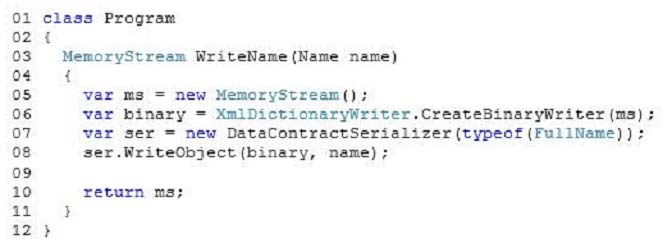

You are troubleshooting an application that uses a class named FullName. The class is decorated with the DataContractAttribute attribute. The application includes the following code. (Line numbers are included for reference only.)
You need to ensure that the entire FullName object is serialized to the memory stream object.
Which code segment should you insert at line 09?
Mitsoshima
Highly Voted 6 years agopeter1994
Highly Voted 5 years, 10 months agoDaGrooveNL
Most Recent 4 years, 5 months agonoussa
4 years, 5 months agonoussa
4 years, 5 months agonoussa
4 years, 5 months agoRover
4 years, 7 months agoDiegoB
4 years, 11 months agoMarkies
4 years, 9 months agoAlchemia
5 years agoAlchemia
5 years agoSully_2020
5 years, 3 months agoryuzai
5 years, 6 months agoGods_Kenny
5 years, 7 months ago